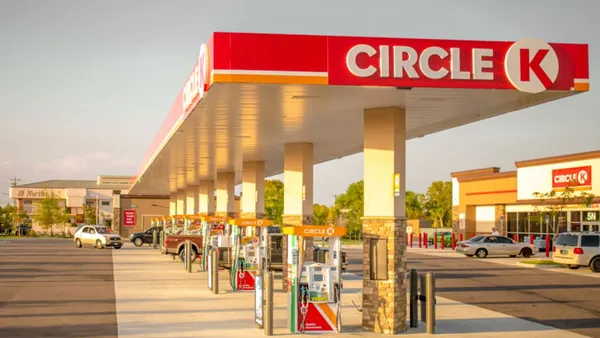Tom Cook is a principal of King-Casey, a restaurant and foodservice business improvement firm.
When COVID-19 hit just over three years ago, staffing shortages, reduced traffic and the unavailability of many ingredients forced convenience stores and restaurants to simplify their menus.
Fast forward to today, and the situation is no better. As such, the need for menu simplification still exists. In fact, the need may be stronger than ever. Foodservice profits are down at convenience stores due to the significant cost increases in labor and cost-of-goods over the last several years.
What convenience store operators need is a proven profit-generating strategy.
Menu simplification is the critical first step towards improving your profitability. In its most basic form, menu simplification results in a pared-down menu through the reduction of SKUs. That means fewer menu items that your staff must learn to prepare and execute.

To ensure you do this correctly, it is crucial when simplifying your menu that the process be driven by data and consumer insights. By doing so, menu item decisions will be based on knowledge and objective analysis. Subjectivity and guesswork, which are so often part of the process, will be minimized if not eliminated.
There are numerous benefits that are gained from a simplified menu, and they are immediate, and direct. These include:
-
Less funds tied up in product inventory.
-
A simpler and more agile product supply chain.
-
A less complex menu for employees and staff to prepare and execute, thereby improving food quality and speed of service.
-
A reduced menu that's faster and easier for customers to navigate, resulting in improved throughput as well as customer satisfaction.
A sound way to simplify your menu is through a multi-pronged approach. This includes conducting a menu operations analysis to develop operations data and product complexity ratings for each menu item. This analysis enables you to determine the menu items adding to or detracting from throughput and profitability.
Operators should also undertake research among consumers to assess their attitudes towards current menu items. These will be essential in understanding consumer order behavior and identifying and diagnosing the price/value perceptions of each of your individual menu items.

A notable research instrument that delivers multiple menu optimization benefits is a TURF analysis. TURF, an acronym for Total Unduplicated Reach and Frequency, is a mathematical procedure for optimizing sets of choices. In simple terms, TURF provides information that helps operators develop the shortest lists of menu items needed to satisfy the vast majority of customers. It also helps determine the average number of items that each customer would find on those lists that they might like to order
A convenience store client I recently worked with, for example, had 37 core items on its menu. A TURF analysis revealed the menu could be reduced to 25 menu items — a 33% reduction — and still give 91% of guests their first or second choice of menu items. In addition, those guests would have multiple reasons to return, since on average they would find 2.2 of their preferred choices available on the menu.
TURF demonstrates the potential changes to customer satisfaction by making substitutions to the optimum solutions. For example, if operations says a particular menu item is too labor intensive, TURF can show what other menu items might be substituted with minimal downside to customer satisfaction.
In addition, a TURF analysis can be run for an entire menu in aggregate or based on individual menu components — like separately identifying the optimum salad choices, the optimum entrees, the best list of soups, the best desserts, and so on. And by appropriately adding questions about price/value, a TURF analysis can also provide important direction for fine-tuning pricing, upward or downward.
Menu simplification research built around a TURF analysis delivers multiple benefits. These include:
-
Identification of revenue driver menu items (items that are price elastic and can withstand price increases)
-
Identification and ranking of menu items that generate incremental reach
-
Determination of items that drive customer loyalty
-
Streamlined menu through the deletion of specific items that have little consumer affinity
-
Faster and easier customer ordering
Astute convenience store brands and operators clearly understand that menu simplification is an essential growth strategy in today’s environment. It will drive down operational costs, improve profitability and meet the speed and convenience needs of consumers.
Simplify your menu now, and you will see an increase in your profits and bottom line.










